All about car touchscreen systems
Car touchscreen infotainment systems are all the rage today. But why? And how is its interface likely to evolve? We analyse.
Published On Aug 28, 2017 12:53:00 PM
1,31,326 Views
Follow us onTouchy Topic
Longer travel time, lengthy traffic lights, congestion, worsening roads, all these mean we are spending more time in our cars today than ever before. Studies peg it to around 10 hours a week, on an average. What’s worrying is that things are not going to get better anytime soon. Correspondingly, car owners are increasingly looking for ways to enhance the quality of time they spend behind the wheel, leading to increasing interests in connectivity and in-car entertainment. Recognising this need, carmakers are equipping their vehicles with cutting-edge infotainment systems. And touchscreen-based systems are leading the charge.
The in-car touchscreen isn’t new. It found its first application on the Buick Riviera in 1987. However, it only started becoming more common from late 2000, with the real boom coming in the last few years. Today, even budget cars like the Renault Kwid have touchscreens. For many buyers, the infotainment system has even become a key factor in deciding on a model or opting for higher variants of a particular car.
The rise of the touchscreen infotainment system coincided with the mass adoption of, and the comfort with, touchscreen-based smartphones.
So, what’s great on a phone is good for the car too? Not exactly. Studies indicate a general consensus that in-car touchscreen systems should not be designed like a smartphone. The car is a unique environment where all displayed information need to be extremely interactive and viewable, requiring no more than a second to access. If you’ve used an in-car touchscreen, you would know how frustrating it is when you are unable to access a function while driving. The interface should be simple and intuitive to minimise distraction so that the driver can stay focussed on the road. You’ll be surprised how many carmakers get this wrong.
Additionally, how good a touchscreen infotainment system is depends a lot on how good the screen is. Touchscreen interaction is further enhanced with the use of the new capacitive screens, as compared to the older and cheaper resistive ones (remember the first-generation touchscreen phones that were quite frustrating to use?). Also, with their superior optical quality, including improved resolution, brightness and viewing angles, expect capacitive screens to be the mainstay. You could also see tech like flexible or curved displays making their way into cars in the not-too-distant future.
Screen size and position have a big bearing on the user experience and safety. High-set, easy-to-glance-at systems that are within the driver’s line of sight are preferred. As for the screen size, bigger is generally better as a larger screen area equals a larger interaction area and, hence, easier access. Most new cars in India come with a 7.0-inch screen, which is a fair size but the future will see it grow as costs drop and as systems become more powerful and information-heavy. Still, electric carmaker Tesla’s massive 17-inch monolith, which is larger than most laptop screens, is an overkill.
But, is a touchscreen the best interface? Well, on its own, it isn’t. There’s no denying that even the best of touchscreens just can’t offer the tactile feel of a physical button or knob; resultantly, that instinctive connect is missing. A good example is the new BMW 7-series whose infotainment system debuts gesture controls and features a touchscreen (a first for BMW), in addition to the standard rotary iDrive dial. Over the 7’s time with us, all our testers experimented with its newer controls but eventually resorted to the familiar rotary dial to navigate the centre screen. Perhaps, if the cars had BMW’s in-development HoloActive holographic projection system that floats a virtual touchscreen next to your steering wheel, matters would have been different. But that’s going way into the future.
Steering-mounted buttons for the infotainment system do make the job of shuffling through the infotainment screens easier for the driver, but even so, there’s only so much that you can do without being forced to look at the screen. Enter voice commands that promise hands-free and distraction-free access to the car’s functions. Many cars already come with voice-activated controls but few work with complete accuracy, and even fewer systems comprehend Indian accents properly. The future, however, is bright as carmakers, auto suppliers and tech companies are investing top dollar in voice-activated tech and artificial intelligence. Soon enough, you’ll talk to your car for virtually all functions. Think of this as having your very own in-car butler.
In conclusion, touchscreens, as we know them today, are not the best interface solutions, primarily down to their potential to distract the driver. The most user-friendly setups are actually those that offer a touch interface along with physical buttons for common functions as well as voice controls. But as cars incorporate autonomous driving functions and free up the driver from the actual task of piloting the car, you can bet the touchscreen will be the primary human-machine interface. One way or another, the touchscreen stays.
IN TOUCH WITH THE TIMES
Honda Digipad
On: City, WR-V
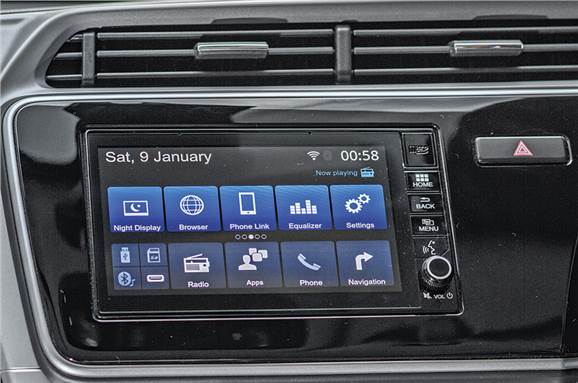
Honda’s new Digipad system uses a 7.0-inch touchscreen that offers great resolution and is slick in operation. The system offers all the expected features and then some. Impressively, Digipad connects to your phone’s Wi-Fi hotspot to allow web browsing and email communication too, albeit only when the handbrake is engaged. A video player and an image viewer are also part of the system and media connectivity options include two USB ports, an SD card slot and an HDMI port, along with 1.5GB of internal storage. There are voice commands too, though you’ll need to be a pro voice modulator to get it to work well. Also, smartphone connectivity is limited to MirrorLink.
Size 4/5 Response 4/5
Clarity 4/5 Features 4/5
Hyundai AVS
On: i20, Grand i10, Xcent
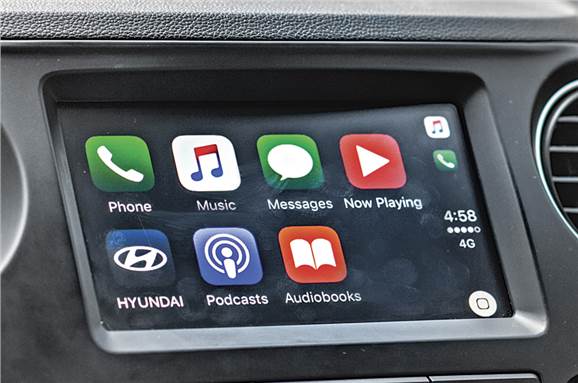
The updated Grand i10 and Xcent come with Hyundai’s new 7.0-inch touchscreen system that impresses for clarity, response time and sensitivity to touch inputs. The menus are neatly laid out and there’s also a ‘My Menu’ tab that allows you to quickly access your favourite functions. What’s nice is that Hindi is also offered as a language option on the system. A video player and an image viewer are part of the package while Android Auto, Apple CarPlay and MirrorLink allow seamless smartphone integration. Smartphone integration enables the voice command feature which works well, especially with Android Auto. Unfortunately, unlike the units on the updated i20 and i20 Active, there’s no onboard satellite navigation on the Grand i10 and Xcent.
Size 4/5 Response 4/5
Clarity 3/5 Features 4/5
Mahindra Technopack
On: XUV500
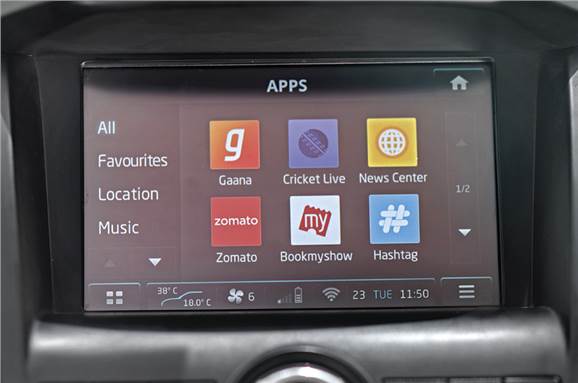
The XUV has got an infotainment system upgrade and the big news is the addition of Android Auto; Apple CarPlay has been given a miss though. Also new is the useful Connected Apps feature that uses your phone’s hotspot to connect to services such as Gaana and Zomato. There’s also what Mahindra calls Ecosense that scores the driver for green driving. While the 7.0-inch capacitive touchscreen system is nice enough to use, its positioning means accessing the small ‘buttons’ at the corners isn’t always convenient. The standard voice control makes a few functions easier to use while Mahindra’s Blue Sense app also allows remote control of the infotainment and climate control systems.
Size 4/5 Response 3/5
Clarity 3/5 Features 4/5
Maruti SmartPlay
On: Baleno, Ciaz, Dzire, Ertiga, Ignis, S-Cross, Vitara Brezza
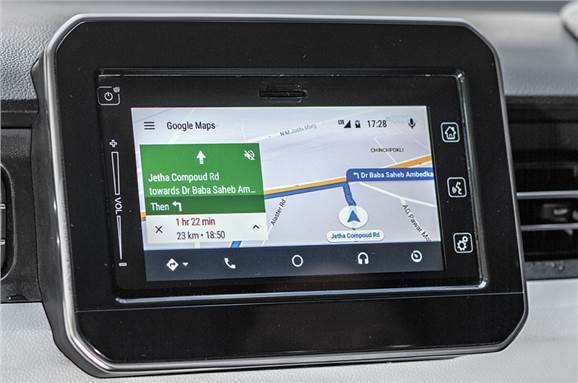
Maruti’s SmartPlay system features a 7.0-inch touchscreen with high-contrast display but its glossy finish is quite reflective. The homescreen is neatly laid out but you have to precisely touch the ‘buttons’ for the system to respond. We aren’t fans of the touch-operated volume controller either. That said, the system is fairly loaded with in-built voice commands (accuracy is average), SD-card-based navigation and even a video player. Also, in a recent update, Maruti Suzuki announced that all models featuring the SmartPlay system can be upgraded to feature Android Auto in addition to MirrorLink and Apple CarPlay.
Size 4/5 Response 3/5
Clarity 3/5 Features 4/5
Renault Media Nav
On: Kwid, Duster, Lodgy
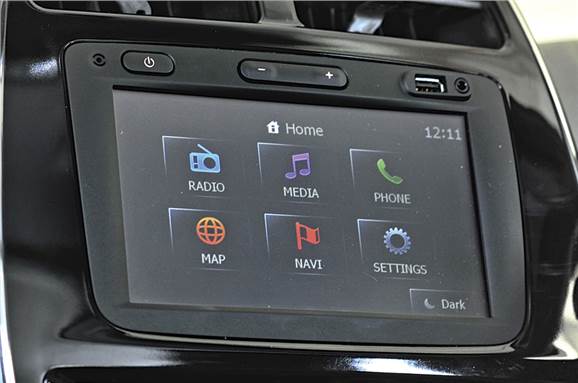
You have to hand it to Renault for democratising the touchscreen by launching its budget hatchback, the Kwid, with a factory-fit 7.0-inch unit. Owner’s pride and rival’s envy as it is, the system works reasonably well. Its interface comprises large icons that clearly display the main functions but you might need to prod the screen a bit to make your selection as it isn’t the most responsive. Essentials like USB and AUX ports, Bluetooth for phone and music streaming and even onboard navigation with voice directions are bundled in. But while the Media Nav system enhances life in the Kwid, it does feel a touch too basic and outdated in the pricier Lodgy MPV and Duster SUV.
Size 4/5 Response 2/5
Clarity 2/5 Features 3/5
Tata ConnectNext
On: Bolt, Hexa, Zest, Tigor

While the Nexon will get a 6.5-inch touchscreen with Android Auto, Tata’s current 5.0-inch unit comes across as small and isn’t the most responsive either. But what the system lacks in size and slickness, it makes up in features. You can use the screen (and even voice commands with reasonable accuracy) to operate the audio player and climate control system. An image viewer and video player are also included. You can increase the functionality of the system by downloading a heavy, albeit handy, navigation app onto your synced Android phone that relays the map on the screen. The Tigor and the Hexa also get a smart jukebox app that allows all car occupants to add songs to a single playlist; it helps make the most of the great sound system.
Size 3/5 Response 2/5
Clarity 3/5 Features 3/5
GOOGLE vs APPLE: NOW IN YOUR CAR
The Google versus Apple debate finds a new battleground – your car’s infotainment system. Google’s Android Auto and Apple’s CarPlay are smartphone projection standards that allow the essentials of your smartphone’s interface to extend to the car infotainment screen, with inputs possible through physical buttons, the touchscreen or voice commands. Both systems are intuitive enough to use on the go and have been designed to keep distractions to a minimum. While users will naturally take more eagerly to the systems their phones run, we did come away more impressed with Android Auto.
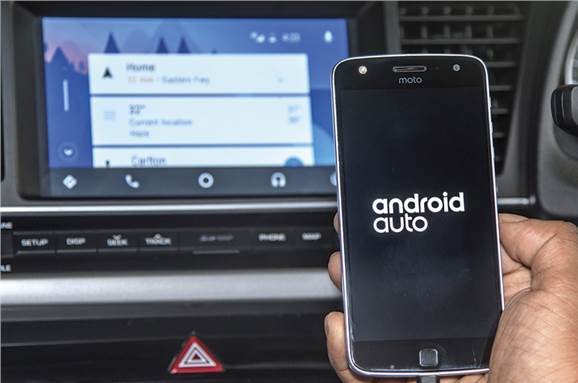
A major advantage for Android Auto is that it is linked to Google Maps – one of the most powerful navigation tools on offer with detailed maps, accurate routing and live traffic updates. Apple Maps is not part of CarPlay in India which is a big downer for iPhone users. Android Auto also has the upper hand with respect to voice commands. Google Voice is far more familiar with Indian names and accents than Apple’s Siri. At a lesser level, there’s the interface. Android Auto’s home screen displays its main icons at the bottom while notification cards take up the majority of screen space, which appears more user-friendly than CarPlay’s standard grid of icons.
Both Android Auto and Apple CarPlay offer various other apps for radio, music streaming, podcasts and messengers. Notably, Android Auto is also available as a standalone app on your smartphone, and that should be of interest if your car doesn’t have a high-end infotainment system. The app’s large tabs make it handy for drivers who use a phone dock in their cars.
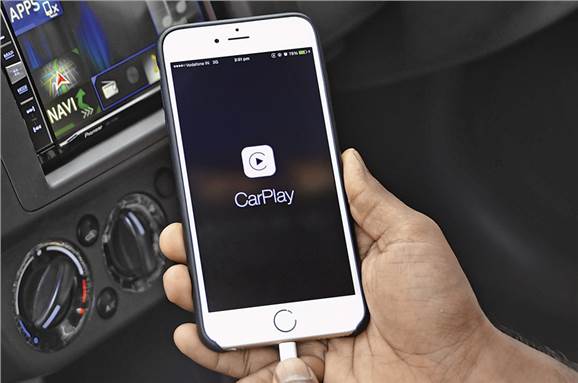
In addition to Android Auto and Apple CarPlay, MirrorLink is another phone mirroring interface offered in cars. Developed on an open source system and curated by the Car Connectivity Consortium (comprising car and smartphone makers), MirrorLink too offers a number of apps for music, navigation and more. However, it isn’t compatible with all makes and models of phones and, resultantly, it isn’t as widespread as it potentially could be.
WHAT'S UP DOCK? TOUCH ON THE CHEAP
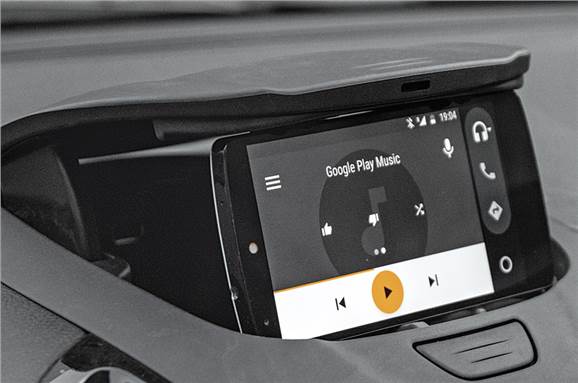
The Figo and Figo Aspire come without factory-fit touchscreen systems but full marks to the team at Ford for thinking up a rather clever alternative – a smartphone holder atop the centre console that the carmaker calls MyFord Dock. Place your synced device in its rubber-lined arms and voila! Your smartphone will double as a makeshift car touchscreen system. Ingenious, right? That the dock sits high up and in clear sight is particularly handy for drivers who rely on their phones for navigation.
Still, the very cheapest way to use your smartphone as an in-car touchscreen unit is by attaching it to an aftermarket car phone holder. Prices start from just Rs 200 with options aplenty, including mounts that slide onto the car’s air-con vents and suction mounts that can be attached to the dashboard and windshield. Just remember, your phone should never impair your view of the road.
AUDI VIRTUAL COCKPIT: THE CAPTAIN'S VIEW

Audi has previewed its next-gen Multimedia Interface infotainment system in the Q8 Concept and, suffice to say, touchscreens are going to be commonplace in the Audis to come. But we’ll leave talking about Audi’s touchscreens for a later date. Rather, it’s the carmaker’s fantastic Virtual Cockpit digital instruments that we’ll be shining the spotlight on.
Having debuted on the 2015 TT and now offered across much of Audi’s range, the Virtual Cockpit is a 12.3-inch high-res TFT display that takes the place of traditional analogue instruments. Drivers can switch between two modes; Classic mode has the speedometer and tachometer take pride of place on the display, while in Infotainment mode the dials are minimised to give more prominence to communication, navigation or media displays. While customisable digital screens are not a novel concept, the brilliance of the Virtual Cockpit system lies in how it provides drivers all the necessary information they’d want, in superb detail and without requiring them to look towards the centre console where a traditional screen would typically sit. In fact, Audi has altogether done away with a centre screen on the TT and R8 sportscars. Most of the screen’s functions can be controlled using the buttons and scrolls on the steering itself, further reducing a driver’s need to take his/her hands off the wheel. The system runs smooth, the switch between screens is seamless and even the 3D maps on offer are well detailed. If the Virtual Cockpit is a sign of things to come, the humble instruments console is in for a dramatic transformation.
TO CLICK OR TO TOUCH: THE GREAT DIVIDE
The choice of interface for an infotainment system is a decision carmakers have to make right at the start of a model’s development programme. But as much interest as there may be for touchscreens today, they are not the de facto option for all manufacturers.

Mercedes-Benz, for instance, has marched on without a touchscreen, with even its latest cars relying on a central controller, voice commands and in the case of the E-class, touchpads on the steering wheel for inputs. While driver distraction is a major concern for many manufacturers, Mercedes insiders tell us the decision to go for a touchscreen is also reliant on the interior concept and design of a car. A touchscreen positioned too far away wouldn’t make sense. But Merc officials certainly don’t castigate the touchscreen itself and believe that in conjunction with an intelligent and sophisticated user-experience concept, it can be as safe as any other interface. The expectation is that touchscreens will only expand the possibilities within human-machine interface, with an intelligent combination of different technologies giving the driver the freedom to use his/her preferred option. BMW has incorporated touchscreens in its latest cars. Mercedes can’t be far behind.

At the other end of the spectrum is Volvo whose 9.0-inch portrait-oriented Sensus touchscreen system is literally the centrepiece of its car’s cabins. The super-slick system is your go-to interface for everything from audio to car settings. Volvo’s design approach has allowed it to minimise the button count, resulting in an uncluttered centre console. But on the flip side, with even climate control settings bundled onto the screen, it can prove to be an unwanted distraction. Tweaks to the interface on the new XC60 have helped, but a few more physical buttons wouldn’t hurt either.
BMW GESTURE CONTROL: TOUCH ME NOT
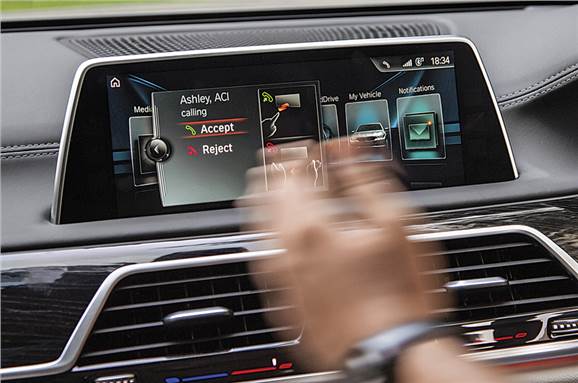
BMW revolutionised how we interact with our car’s infotainment systems with iDrive back in 2001. Its new gesture control tech could be the next big thing. Introduced in the new 7-series, BMW’s gesture control tech eliminates the need for the driver to operate any dials or buttons for basic functions such as turning up the volume or receiving a phone call. Simple hand gestures do the trick. A camera in the car’s roof captures hand gestures which are recognised by the system and desired commands are executed. There are four predefined gestures for raising/lowering volume and accepting/declining phone calls, and a fifth gesture which is a customisable option. It is not that difficult to get a hang of, but it takes some practice before the commands become intuitive. Sure, the system is a bit gimmicky at this stage and limited in scope too, but as BMW refines it, you can bet the tech will trickle down to more cars.
KEEP YOU EYES ON THE ROAD AND HANDS ON THE WHEEL
Distracted driving on account of mobile phone usage at the wheel is on the rise the world over and has become a major cause of accidents. Using a handheld mobile phone while driving affects driver reaction time, the frequency of lane change, and causes an overall reduction in awareness in the driving scenario. Studies suggest mobile phone usage results in a four-fold increase in the risk of causing a crash. A Ford study (see above) on distracted driving revealed some frightening figures. A recent survey conducted in India by SaveLife Foundation found that of the 1,749 participants –
- 47 percent admitted to receiving calls while driving
- 94 percent were aware of the dangers of mobile phone use on the go
- 34 percent tended to apply their brakes suddenly when using mobile phones
- 20 percent experienced a near miss or a crash owing to being distracted by their phone
While in an ideal world, the driver should not be using any form of communication devices on the go, handheld mobile phone usage poses the biggest risk. Upcoming infotainment systems that balance the contradicting requirements of enhanced connectivity and minimal driver distraction could just offer some sort of a compromise.
In the time it takes a driver to snap a selfie at 60kph, he’ll travel blind the equivalent of over half a lap of an athletics track. Here’s how long five everyday tasks keep a driver’s eyes off the road.
- Looking down at AC dial: 16.7 metres = little over the length of a basketball court
- Adjusting your hair: 33.4 metres = nearly the length of one and a half tennis courts
- Glancing at phone notification: 66.8 metres = nearly the length of three cricket pitches
- Dialling a number:116.9 metres = approximately the length of a football field
NISSAN SHIELD SIGNAL: DIGITAL DETOX ON THE GO
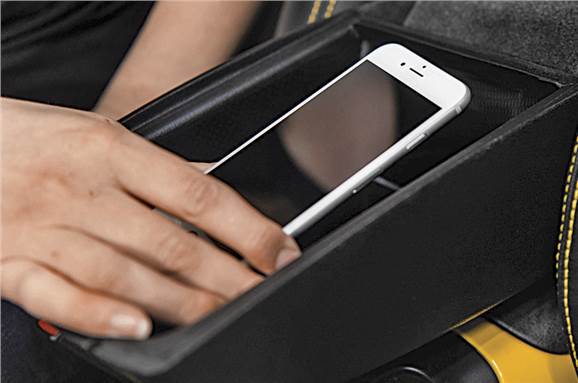
Do you find yourself reaching out for your phone every time you hear a social media notification or an app alert? If so, you are the right candidate for Nissan’s clever Signal Shield. A prototype compartment that can be incorporated within a car’s front centre armrest, Signal Shield is based on the principle of the Faraday cage from the 1830s that is an enclosure lined with conductive material such as wire mesh which blocks electromagnetic signals. In the same manner, Signal Shield blocks all cellular, Bluetooth and Wi-Fi signals, in effect creating a phone-free zone in the car. To ensure the phone can still be connected to the car’s entertainment system to play music, AUX-in and USB ports are provided in the compartment. To restore wireless connectivity, all one needs to do is lift the compartment’s lid. Talk of simple tech with big potential.
Copyright (c) Autocar India. All rights reserved.

.jpg&w=700&q=90&c=1)
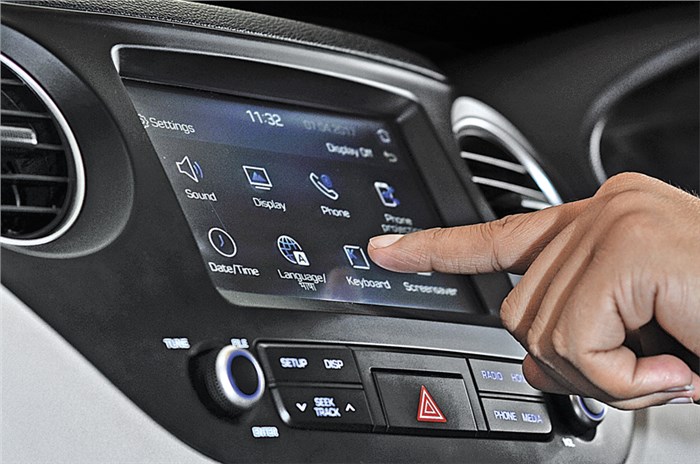
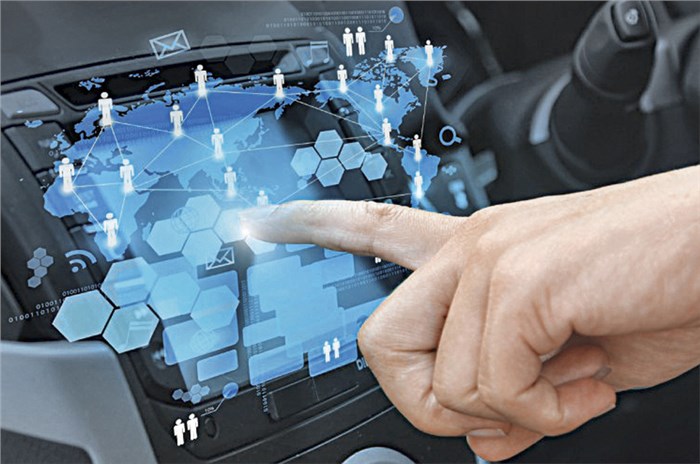


Comments
Member Login
Personal Details
No comments yet. Be the first to comment.